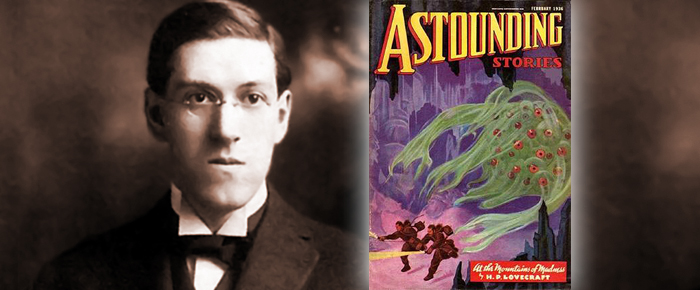
By Heidi Simmons
——
At the Mountains of Madness
by H.P. Lovecraft
Fiction
—–
Alien movies always intrigue me. I like to see the creative genius of filmmakers as they visualize fantastic technology and strange creatures from other worlds. The best alien movies have a theme that is relevant to the real humans who currently inhabit the earth. In many sci-fi books and flicks, I have noticed that the aliens, more often than not, physically resemble sea creatures.
After seeing the movie Arrival, I was reminded of H. P. Lovecraft’s At the Mountains of Madness (Various, 114 pages) and re-read the story. The film Arrival starring Amy Adams and Jeremy Renner could have easily been inspired by the strange Lovecraftian octopus-like creatures.
The Lovecraft story opens with an expedition to the great continent of Antarctica. Two teams of geologists from Miskantonic University have decided to part ways and go in separate directions to pursue their research: One group, headed by Professor Lake and the other by Professor Dyer. Each has a team of scientists and students who plan to drill through the ice and discover its rich past.
Lake is the first to come across something astonishing that’s too difficult to describe. Although he does in fact get out a series of communications demanding the attention of the entire expedition. Lake and his team found strange artifacts and dissected a creature that resembles something with both animal and plant characteristics. Dyer immediately changes course and heads to Lake’s site. Bad weather conditions present a problem — communications have been impeded and poor visibility hinders travel.
When Dyer and his team finally arrive at Lake’s camp, something has gone terribly wrong. The entire crew, men and animals, have been devastated. As horrific as the scene is, Dyer moves forward to understand what has happened and what the area further contains.
Jutting out from the ice plateau is an undocumented and never seen jagged mountain range the size of Mount Everest. Dyer travels with a colleague to explore the strange rock formations. He discovers the black rock and pinnacles are the walls of an ancient city scape. The mountain range is filled with tunnels, chambers, passageways and bridges. It is a disorienting labyrinth of walkways inspiring the name “Mountains of Madness.”
The scientists find carved rooms and rocks with etchings and sculpture. Arabesque and curlycue writings in different sizes and shapes seem to resemble a collection of store fronts. Some pictograms possibly described conflicts and victories. But who can say for sure?
Clearly the mountains are the remains of a civilization built 500 to 1000 million years ago. Dyer realizes this is the world that was inhabited by the Elder Things mentioned in the Necronomicon and Pnakotic Manuscripts. The creatures are likely the forefathers of the Cthulhu Cult.
Dyer finds giant penguins six feet tall and soon comes across the tentacled creature that resembles an octopus-like beast, slimy with a stench so rank they can barely breathe. He and his partner are soon discovered by the mountain inhabitants and are chased out of the city barely escaping with their lives. The men are forever changed by the bizarre encounter and crazy world.
At the Mountains of Madness is narrated after the fact by Professor Dyer. He is recollecting the horror and awe of the ancient city. As a geologist, he marvels at the carved rock and stone architecture and speculates on the probable economy of the ancient civilization. He theorizes how they were destroyed and why they have resurfaced. Evolution and the changing environment have brought them back from the sea.
Author Lovecraft has inspired many great filmmakers including the likes of Steven Spielberg, Ridley Scott and Guillermo del Toro. In a way, the movie, Arrival, could be considered a sequel to Mountains of Madness in that, octopus-like creatures arrive around the earth in giant carved rock ships and try to warn the inhabitants that life on the planet is at risk using a challenging form of curlicue writing that first must be deciphered.
I liked the movie even more once I thought about Lovecraft’s At the Mountains of Madness.
Dyer could not take the time to communicate with the creatures for fear of his own life and sanity. After all, he was trespassing and the life forms had harmed — dismembered and/or studied — his colleagues. But what if the residents of the “mountains” have since evolved and were sharing what they have learned about the ancient evolution of the planet? Anyone?
As excited as I was about this idea and wanting to share a conversation on the subject, it turns out that Arrival was based on a short story by Ted Chiang called “Story of Your Life,” which I have not read. But who knows, perhaps Mr. Chiang was inspired by Lovecraft.









































